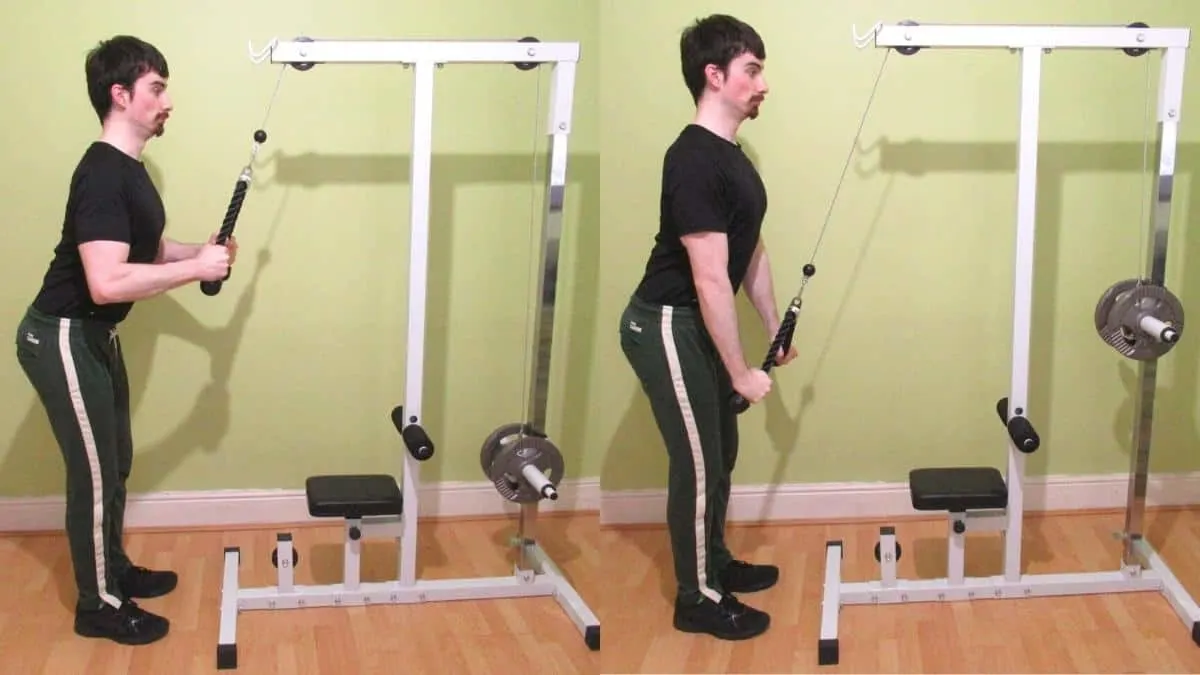The main role of your triceps is elbow extension, which is to say, locking out the elbow joint.
But despite this anatomical reality, many lifters fool themselves into thinking that they’re getting a better workout by stopping short of lockout during exercises like the straight bar cable pushdown.
Actually, the opposite is true; you’re triceps receive significantly less stimulation when you perform partial pushdown reps.
This reduced triceps activation makes complete scientific sense considering that you’re ignoring their primary function by failing to lock your elbows out.
Thankfully, the isometric tricep pushdown can help. By forcing you to maintain a prolonged peak contraction, the iso cable pushdown increases your lockout strength and triceps endurance, both of which will help you to perform full range of motion reps across all of your sets.
Related: Tricep band pushdown
Isometric triceps pushdown exercise details
- Also Known As: Iso tricep pushdown
- Main Muscles: Triceps
- Exercise Type: Strength
- Exercise Mechanics: Isolation
- Difficulty Level: Intermediate
- Equipment Needed: Cable machine, rope attachment
How to do an isometric tricep pushdown
- Attach a rope to a high pulley.
- Grab the rope and then take a step or two away from the machine.
- Hinge at your hips slightly (while keeping your back straight) and tighten your core.
- Tuck your elbows into your sides.
- Push the rope down toward the floor by flexing your triceps.
- As your elbows approach full extension, “split” the ends of the rope by moving them away from each other.
- Hold the peak contraction for 15-30 seconds. This is one set.
- Repeat for 3-5 sets in total.
Iso cable pushdown variations
Here are 5 more types of isometric pushdowns that you can challenge your triceps with.
Isometric pushdown version two
Performing prolonged tricep pushdowns is a great way to enhance your triceps endurance.
But for even more muscle growth, you can combine isometrics with dynamic reps so that your triceps get the full benefit of the eccentric part of the repetition.
In this scenario, you’d perform your regular pushdown reps. But instead of holding the contraction for a brief second, you’d squeeze your triceps for a full 3-5 seconds.
Another tricep-taxing option is to start the set with a 15-20 second isometric and then perform your usual reps. This technique gives your triceps more time under tension than usual but also necessitates lifting slightly lighter weights than you would during non-isometric pushdowns.
V bar iso pushdown
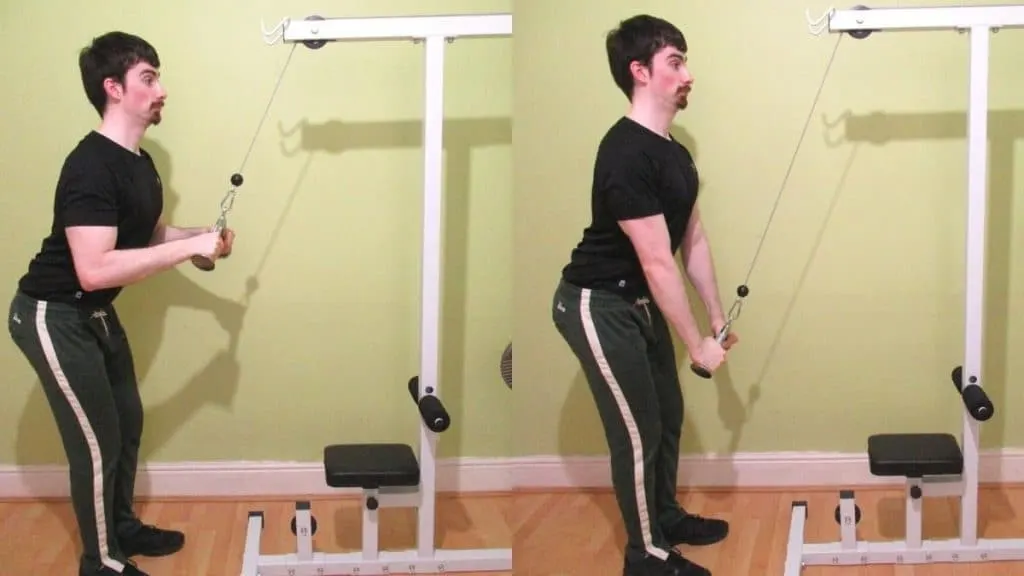
The isometric cable v bar press down enables you to subject your triceps to heavier weights (but not necessarily more tension) than the rope version.
This is because v bars, which are fixed, are easier to stabilize than rope attachments, which are free-moving.
So if you want to do isometric cable pressdowns with as much weight as possible, then the v bar iso pushdown is the way to go.
The trade-off of being able to lift heavier weights is that your triceps get trained over a slightly shorter range of motion when you use a v bar. This is because the v bar is fixed. So unlike with the rope attachment, you can’t split the ends to increase the range of motion and intensify the peak contraction.
On the other hand, if you want to work your abs as well, which will mean decreasing the resistance a bit, then you can do cable pushdowns kneeling on the floor. Performing tricep pushdowns with a Swiss ball also challenges your core muscles and triceps simultaneously.
EZ iso cable pressdown
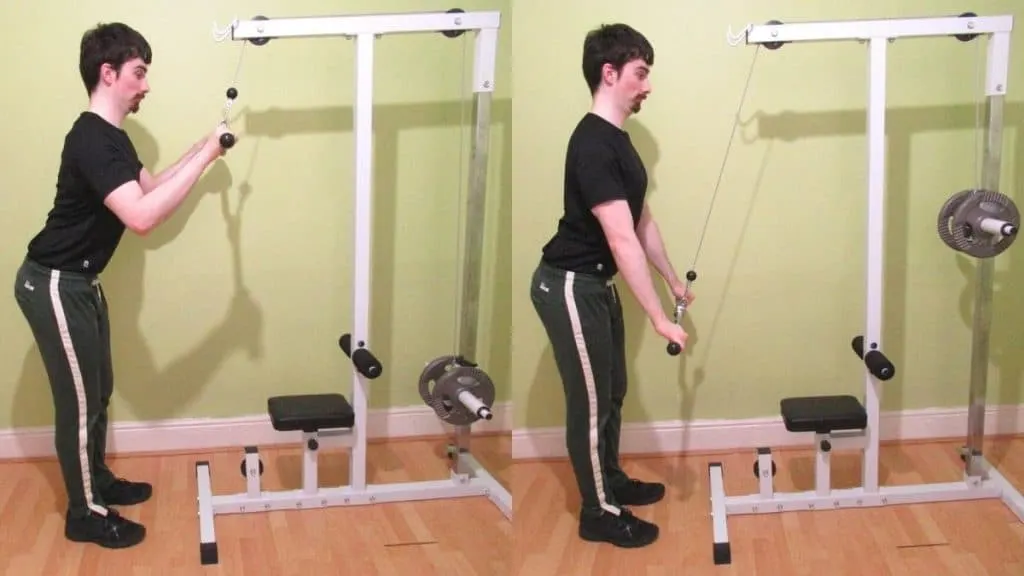
The isometric EZ bar push down is a good exercise for those who find using a straight bar attachment too uncomfortable.
When you can lift in comfort, you’re able to apply more force to the bar, which means that you can train your triceps with heavier loads and more training volume, which ultimately leads to greater hypertrophy.
The reason that EZ bar attachments are so wrist-friendly compared to straight bars is that they have curved grips (straight bar attachments, on the other hand, force your wrists into full pronation).
These curved grips enable you to do pushdowns with your hands in a semi-supinated position, which goes a long way to taking the pressure off your joints.
Reverse isometric triceps pushdowns
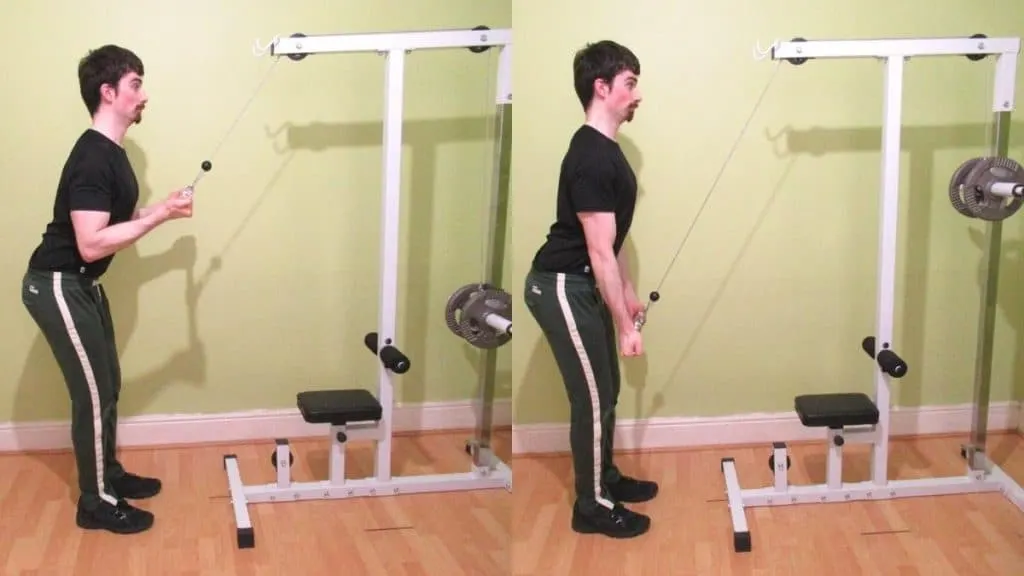
Isometric underhand pushdowns are the most challenging exercise in this list because they produce the strongest peak contraction.
This is because using a reverse grip for pushdowns encourages you to keep your elbows tucked in.
In turn, this elbow positioning puts your shoulders into slight extension, which enables the long head of your triceps (the only triceps muscle that acts on the shoulder joint) to contract with more force.
For this reason, as well as the fact that you can’t actively push into the bar with the palms of your hands when you use an underhand grip, you’ll need to lighten to weight when you do a reverse isometric triceps pushdown.
One arm isometric tricep pushdowns
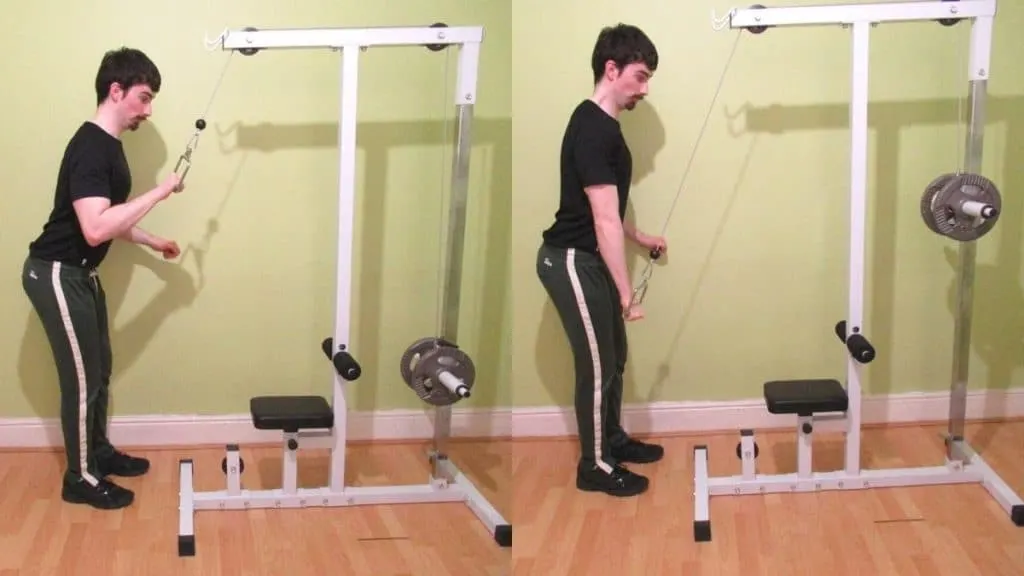
Tricep size asymmetries are problematic for a few reasons—even if you don’t train for aesthetics.
Having tricep muscular imbalances makes your upper arms look less proportional, which is particularly bad if you’re a bodybuilder because muscle symmetry is a big part of physique show judging criteria.
Similarly, having triceps of different strengths can cause the bar to become lopsided during your bench press and overhead press sets.
Besides making it difficult to lock out the weight, a lopsided barbell further exacerbates your muscle imbalances by forcing one of your triceps to do far more work than the other.
But it doesn’t need to be this way.
The isometric single arm cable extension and the isometric one arm reverse grip pushdown help to ensure that both of your triceps are getting a similar amount of stimulation.
Specifically, these unilateral exercises get you accustomed to maintaining a prolonged isometric contraction with your weaker triceps muscle, which can help to reduce your size imbalances and strength disparities.
Also Try: Tricep pushdowns on an incline bench
Conclusion: How beneficial are isometric tricep pressdowns?
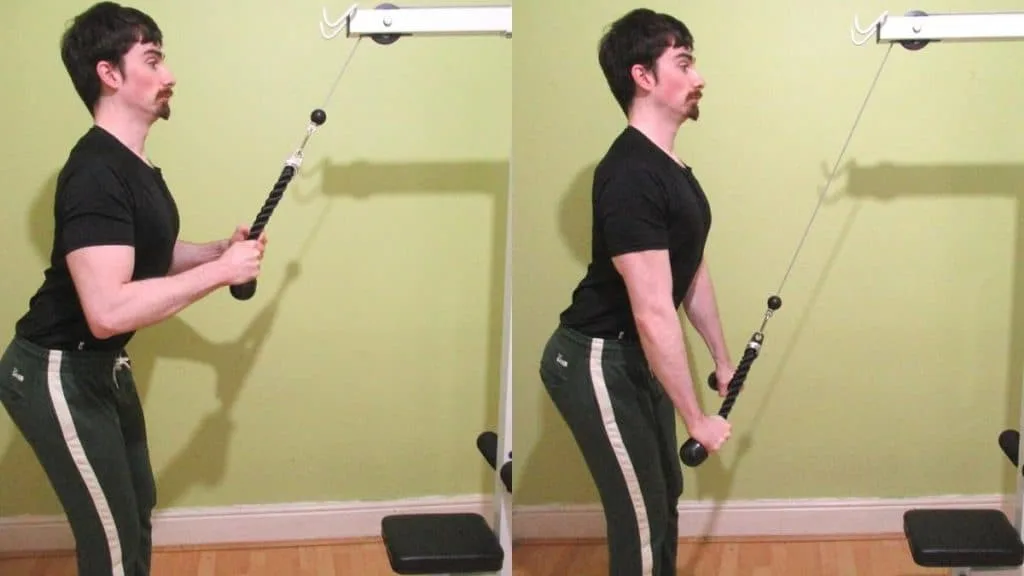
The iso cable pressdown is beneficial in a number of interesting ways.
First off, the iso pushdown increases your triceps endurance by making you hold a challenging peak contraction for 15-30 seconds. This extra endurance will help your triceps to tolerate more training volume, which in turn will lead to greater hypertrophy over the course of time.
You can even hold the contraction for 30-60 seconds if you’re specifically doing this exercise to enhance your endurance.
Similarly, the isometric tricep pushdown increases your lockout strength. Besides boosting your compound pressing power, this extra lockout strength encourages you to use a full range of motion during your single-joint exercises by ingraining the importance of a full elbow extension in your movement patterns.
So if you often forget to lock your elbows out during pushdowns, then the isometric cable pressdown is an exercise that can quickly help to correct this bad habit. Once you get used to holding a tricep contraction, it feels weird to stop short of elbow lockout.

